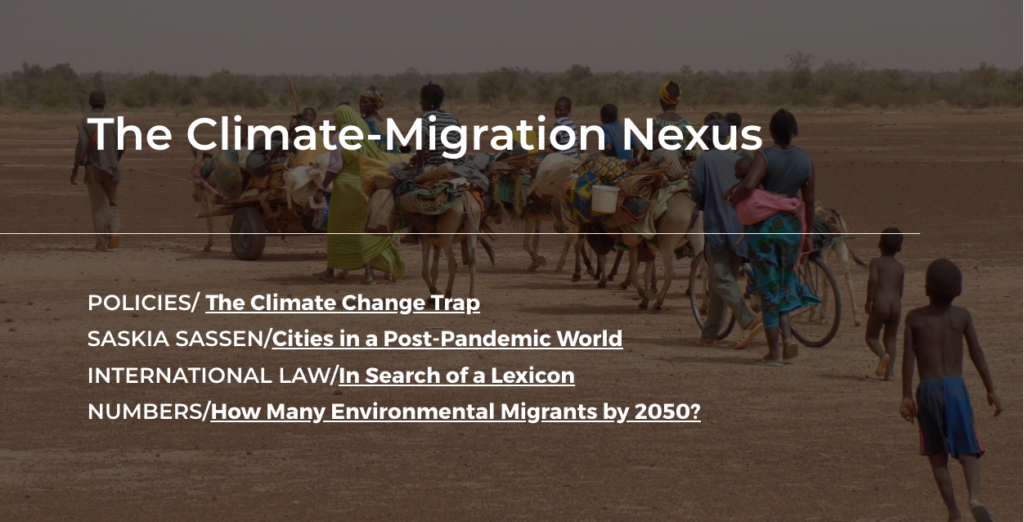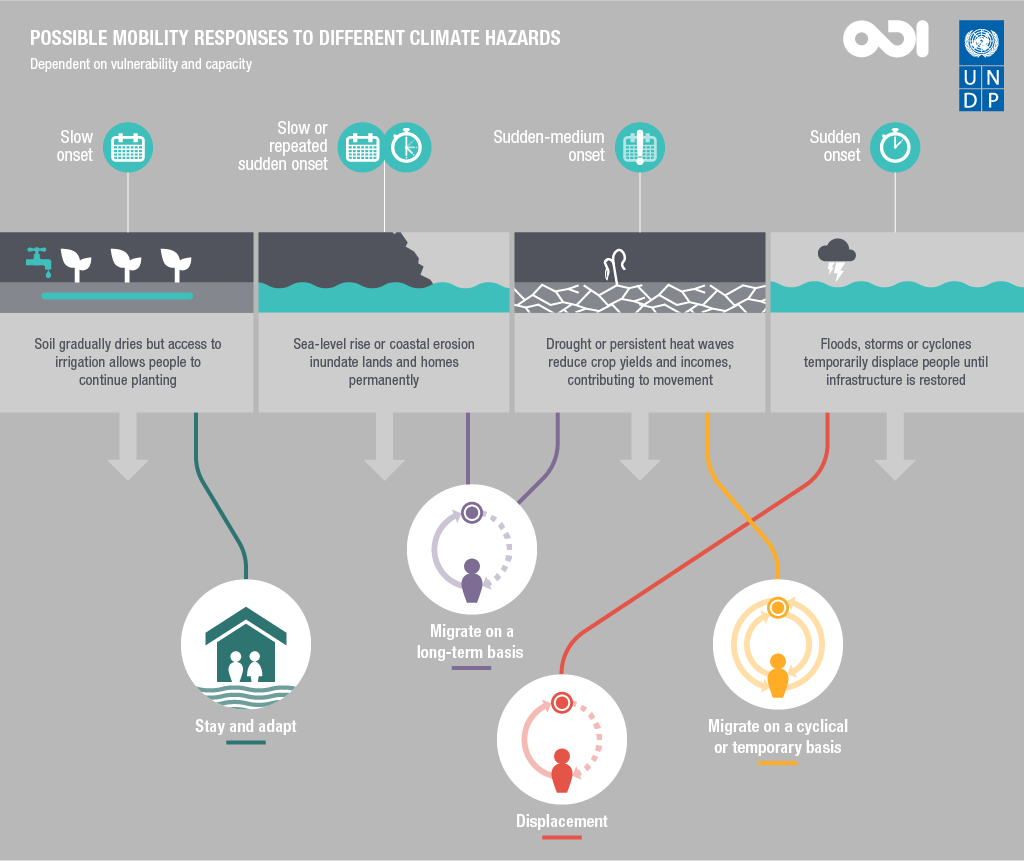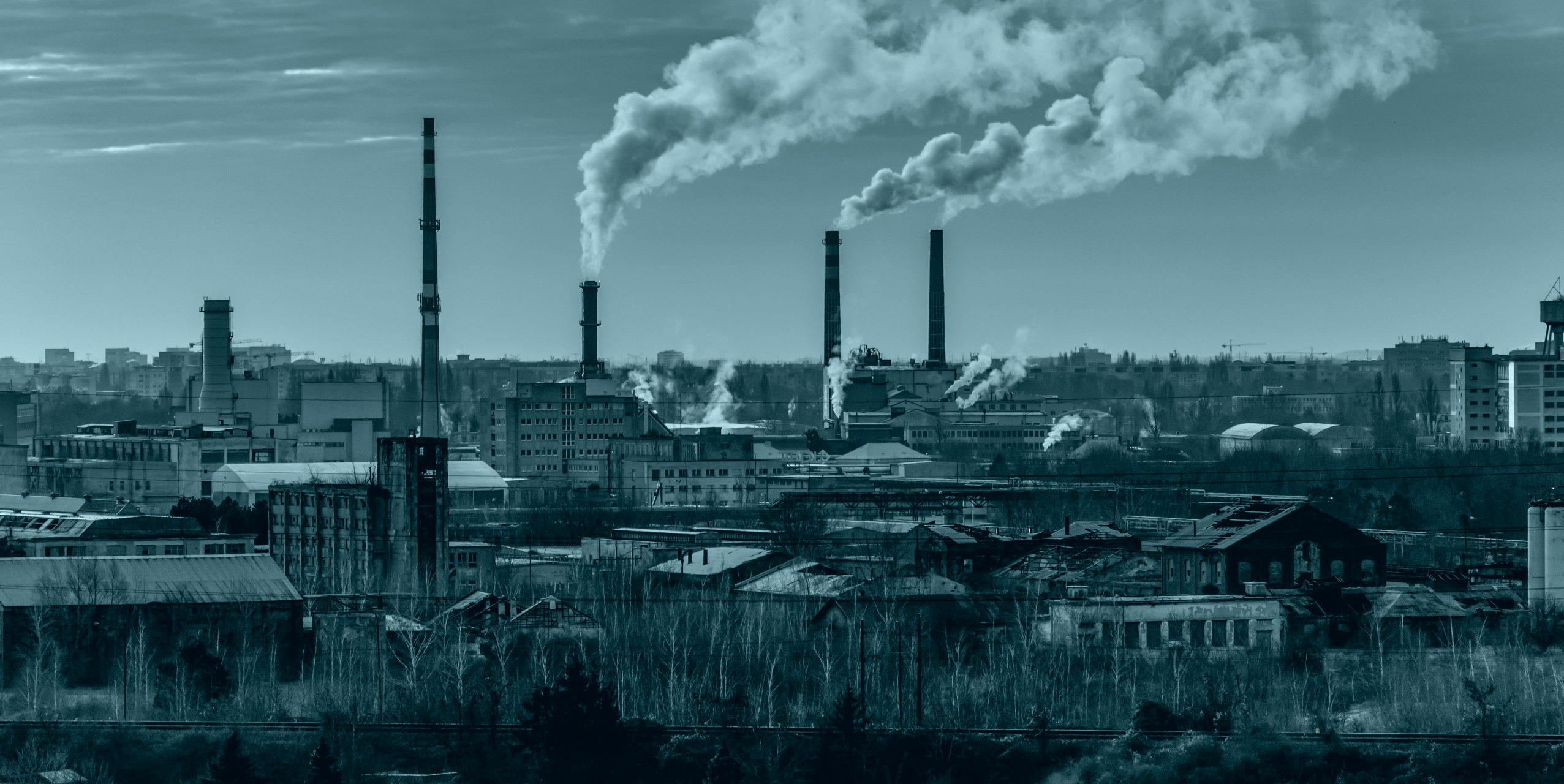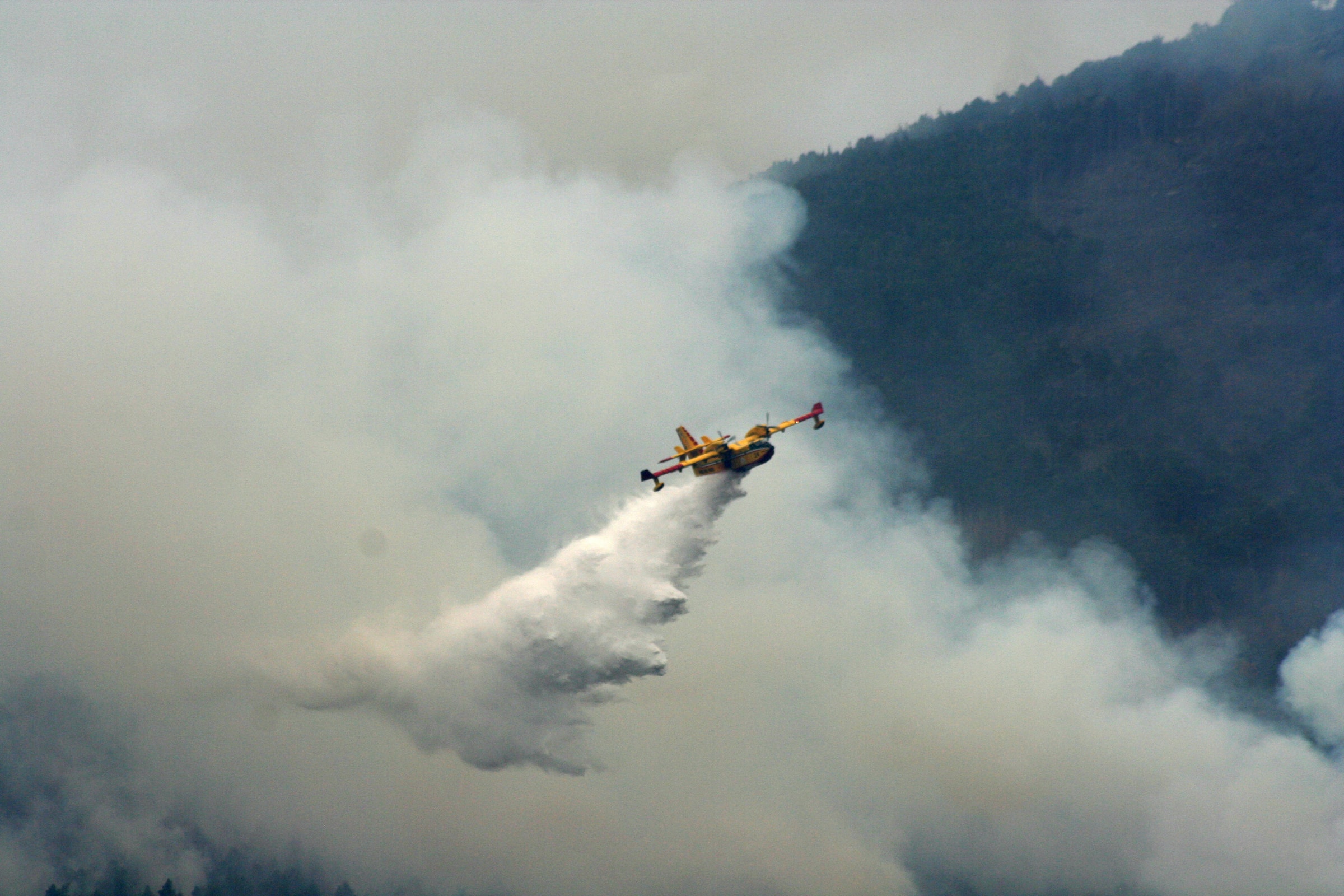
Click and read the full story
Following the bloodshed of WWII, the United Nations created an agency with the mandate to protect refugees, forcibly displaced communities and stateless people: the United Nations High Commissioner for Refugees (UNHCR), which is entrusted with quantifying and assisting displaced people on the basis of their requirements. However, when talking about people displaced by climate change there is still a sobering lack of information, that leads to confusing terminology and inadequate legal framework that fails to protect those most in need.
Although changing weather has always had an impact on the movement of people, it is also clear that climate change is playing an increasingly influential role in determining migratory flows, due to more frequent extreme weather events, rising sea levels and other climate hazards that lead to instability. At the end of 2019, there were over 70.9 million people forcibly displaced, of which 26 million were recognised as refugees. How many of these were due to environmental reasons? Although the answer is unclear, the UN forecasts that there could be anywhere between 25 million and 1 billion environmental migrants by 2050, revealing both the extent of the problem and the lack of clarity surrounding how to quantify climate-induced migrations.
The climate-migration nexus must be addressed so that an adequate legal framework can be put in place to safeguard the rights of displaced peoples. A key part of this process involves establishing the legal language with which to quantify and assist those in need. Central to this debate is the difference between environmental migrants and climate refugees.
We’ve been trying to ring the alarm bells […] We know that it’s coming
Dina Ionesco, International Organization for Migration
When climate change causes migration
“We’ve been trying to ring the alarm bells […] We know that it’s coming”, says Dina Ionesco, Head of the Migration, Environment and Climate Change (MECC) Division at the International Organization for Migration (IOM), who explains that climate change will come with a mass movement of people on an unprecedented scale.
The types of impacts caused by a warming world also have a large influence on the kind of migration they generate and the response they require. There is a big difference between slow onset factors – such as sea level rise and drought that takes place over months or years – and rapid onset ones – such as typhoons and hurricanes which occur with little warning and can take place over a number of days.
The report “Economic Losses, Poverty & Disasters” shows that climate-related phenomena were responsible for 91% of all recorded disasters over the past 20 years, with floods and storms being the principal perpetrators. These disasters lead to a mixture of both rapid and slow onset migrations which require different legal frameworks to ensure that those affected are assisted.
However, it is very difficult to separate when the environment is the main cause of migrations, as opposed to a combination of factors that involve socioeconomic, political, demographic, cultural and personal reasons. The clearest example of climate change being the sole cause of migration is in that of small island states that are disappearing due to sea-level rise which has already submerged eight islands. However, this is the exception rather than the norm.

Taking refuge in words
Multi-lateral institutions, policymakers and academics continue to grapple with the climate-migration nexus, which involves identifying how many people are migrating due to climate change and where these migrations are taking place. A lot of the confusion actually revolves around the legal language being used, including terms such as environmental migrants, refugees and displaced peoples.
Although these words are often used as synonyms, or cherry-picked to create compelling titles and sensationalist news stories, there is a clear difference between migration – which involves a certain amount of freedom of choice – and displacement – which implies no choice and is a forced movement. Furthermore, it is important to distinguish between internal and cross-border migrations as these are counted differently and require different approaches for providing assistance.
In relation to the climate-migration nexus, there are three important categories:
- Environmental migrants which refers to “persons or groups of persons who, predominantly for reasons of sudden or progressive changes in the environment that adversely affect their lives or living conditions, are obliged to leave their habitual homes, or choose to do so, either temporarily or permanently, and who move within their country or abroad.” (IOM, 2011: 33 in IOM, 2014:13).
- Environmentally displaced person meaning “persons who are displaced within their country of habitual residence or who have crossed an international border and for whom environmental degradation, deterioration or destruction is a major cause of their displacement, although not necessarily the sole one” (IOM, 2011:34 in IOM, 2014:13).
- Climate refugees which is commonly used to describe forced migration in the context of climate and environmental change. However, according to the UN, “this is not a legally valid term as the 1951 Refugee Convention does not recognize environmental factors as criteria to define a refugee”.
Notably, the term “climate refugee” is not recognised in international law as the word “refugee” describes people fleeing war or persecution and have crossed an international border. In contrast, environmental migration is believed to impact people mainly within national boundaries, rarely leading to cross-border migrations and hence being referred to as “persons displaced in the context of climate change” or “environmental migrants”.
Understanding these distinctions is crucial because it influences the way we talk about the climate-migration nexus, how we quantify it and the legal frameworks and policy initiatives that are established.
Migration is multicausal. Suppose that productivity of a subsistence farmer declines over the years, eventually because of climate-related reasons and the farmer has to migrate. Is this an environmental migrant or has he had to migrate due to financial reasons?
Cristina Cattaneo, RFF-CMCC European Institute on Economics and the Environment (EIEE)
Lack of a legal framework
Due to the multicausal nature of climate change, it is difficult to account for its direct effect on migrations and leads to the climate-migration nexus often remaining murky and unclear. According to the Overseas Development Institute, “International processes, particularly those on migration and displacement, climate change and disaster risk reduction, increasingly refer to the links between climate change and human mobility. However, these links are not always grounded in evidence, and this increased attention has not led to the coordinated, significant policy or legislative change that is required”.
Cristina Cattaneo, Head of the Climate Migration Unit at the RFF-CMCC European Institute on Economics and the Environment (EIEE), explains that “it isn’t easy to define environmental migrants. For example, suppose that productivity of a subsistence farmer declines over the years, eventually because of climate-related reasons and the farmer has to migrate. Is this an environmental migrant or has he had to migrate due to financial reasons? Migration is multicausal, many factors interplay in shaping the migration decision.”

Climate migrants – people that move from a place to another because of climate change impacts – have remained hidden in statistics on migration and climate debates for a number of years. “We want migration policy to take climate into consideration […] Climate change impacts peoples’ mobility around the world and that migration can be a sad, tragic story with forced migration and displacement due to climate change, but also migration is part of our lives and can be something positive and a strategy to live out of harm’s way and build a better life”, explains Ms. Ionesco.
The IOM is vocal in its belief that the solution is not to use the word “refugees” when talking about environmental migrations and that policymakers should not establish a climate-specific legal status, parallel to the existing refugees’ status. This is because focusing the debate on ascribing refugee status “can lead to a narrow and biased debate and would provide only partial solutions to address the complexity of human mobility and climate change”. Furthermore, it would ignore key aspects that define human mobility in the context of climate change and environmental degradation.
If not refugees then what?
There has been growing recognition in recent years for the need to integrate migration into a global climate and environmental mechanisms, and for climate change mechanisms to incorporate human mobility aspects, in particular as an adaptation strategy that comes with both risks and benefits.
Climate science must continue to work in unison with multilateral institutions, development agencies, and international law so that this challenge is properly addressed. This will also include working on a multilateral strategy and legal framework that address the climate-migration nexus.
Undoubtedly, rising global temperatures will continue to bring this relationship into the foreground. Collecting data and studying the relationship between climate change and the – direct and indirect – impacts it has on human mobility is a key part of this process.






